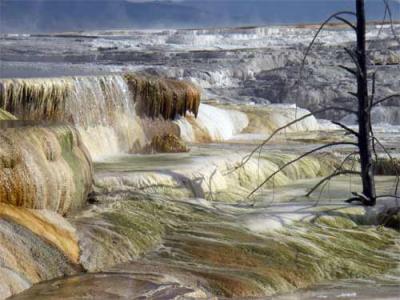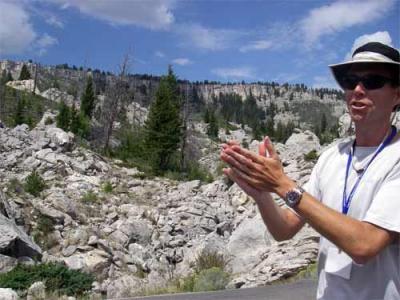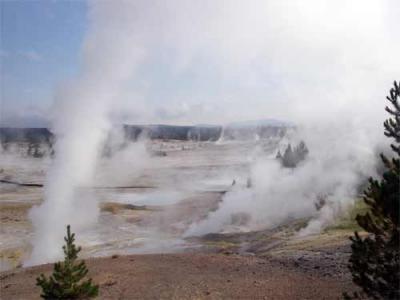No, I am not yet in Antarctica. The landscape you see is not ice, but rather calcium carbonate precipitated out of solution from Mammoth Hot Springs in Yellowstone! One of four extreme environments I have always wanted to visit. Antarctica is another, followed by the ocean floor( Mid Ocean Range would be nice) and any celestial body in space( Mars and Europa especially intrigue me).So, the chances of real-time planetary exploration are pretty much nill for me- BUT, Yellowstone became a reality this summer, and Antarctica is just months away!!
The trip to Yellowstone was sponsored by the Lunar Planetary Institute, Sandia National Laboratories, and NASA’s Science Mission Directorate. Our focus was studying the geo-chemical environment that supports the microbial life found there. I learned an incredible amount about what life really needs and the dynamics necessary for life to take hold. Instructors for the course were Drs. Allan Trieman, Stephanie Shipp, Walter Kiefer , and Ms. Becky Nelson from LPI; and Tori Hoehler, Nasa/Astrobiology .
Tori Hoehler explaining the geologic processes near Huckleberry Ridge
It was a week of discovery, exploration, and long hikes for 30 teachers! Aside from a few nights of cool weather at Yellowstone, the weather was very hot both in the park and at Montana State in Bozeman where we had classroom instruction. The huge bag of long pants, sweaters, and outerwear never got used!! Guess that won’t be a problem in Antarctica J
This experience had given me new knowledge about extremophiles and the chemical and bio-signatures scientists look for in their search for life. Standing in Geyser Basin, 1-2 miles above magma, surrounded by venting steam and heat has given me a new respect for this incredible place on Earth. It will be interesting to compare the environments of Yellowstone and Antarctica as analogs for studying other planets/moons, and their habitability for supporting life now, or in its geologic history. Stay tuned!
Norris Geyser Basin, Yellowstone
Can you feel the heat??




